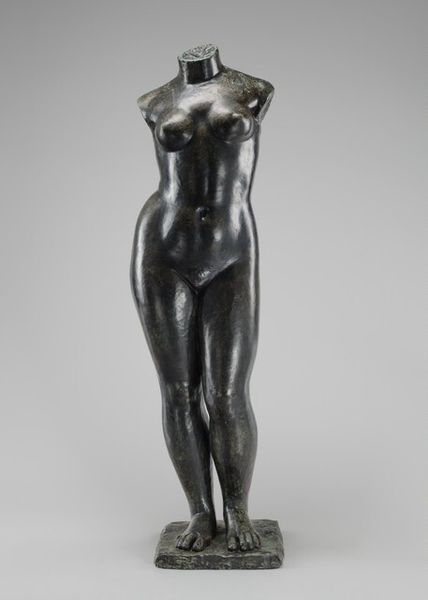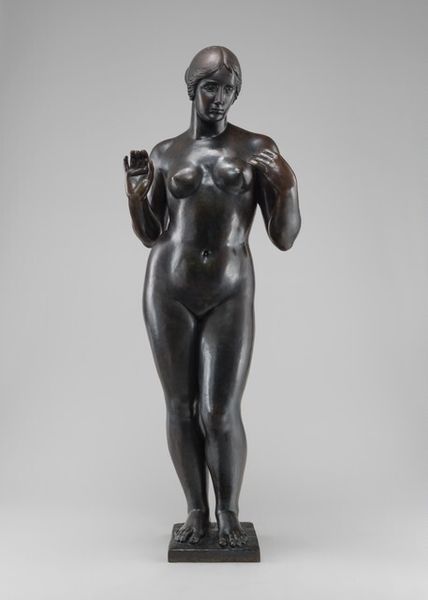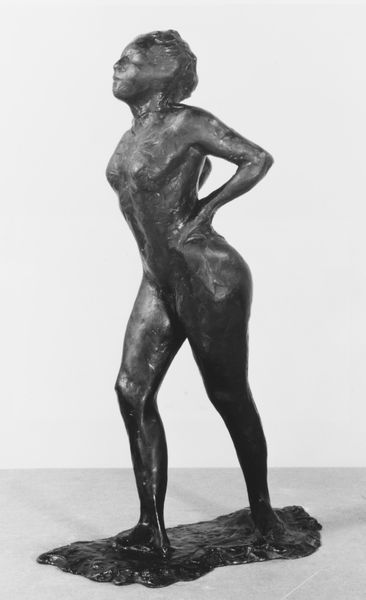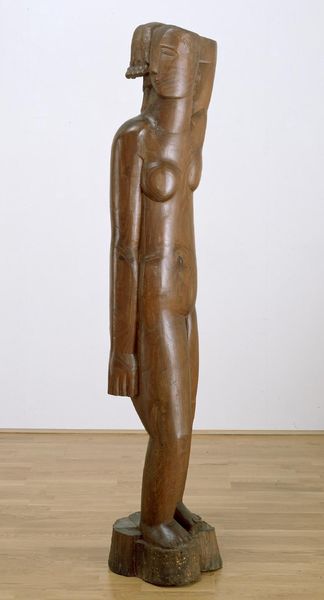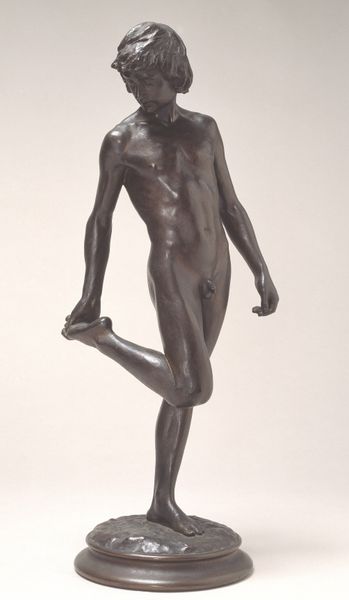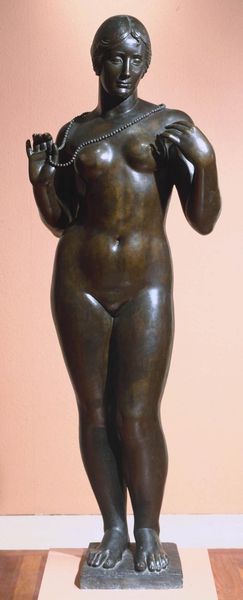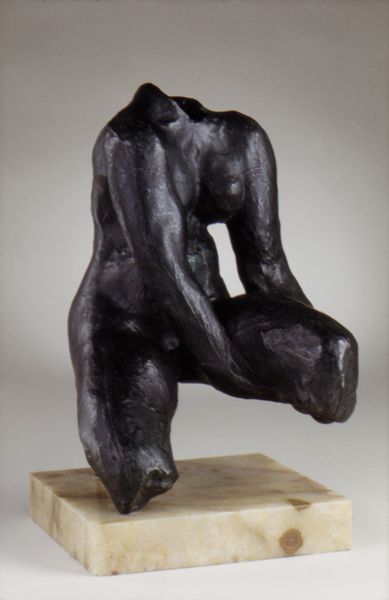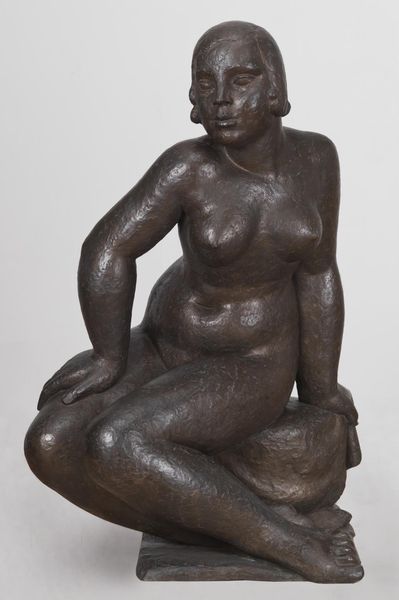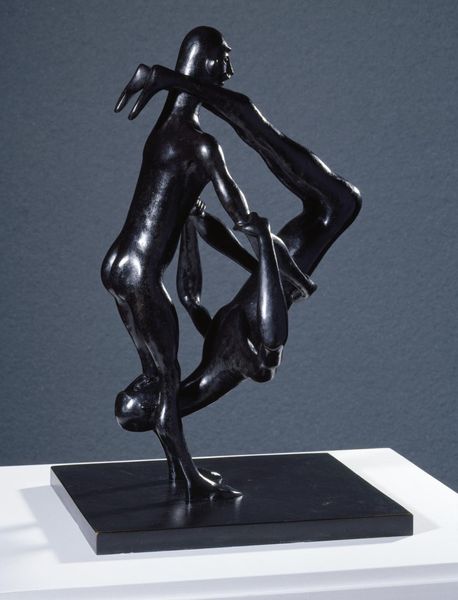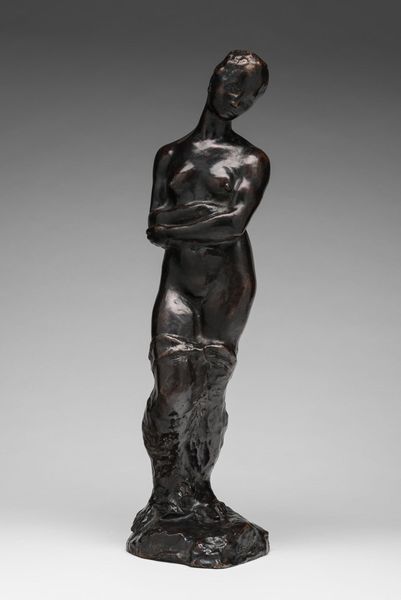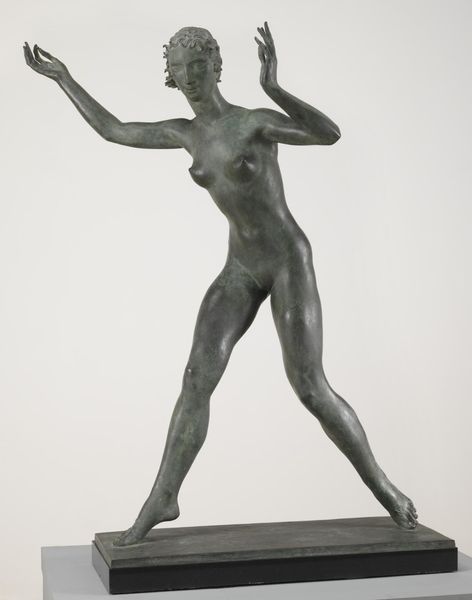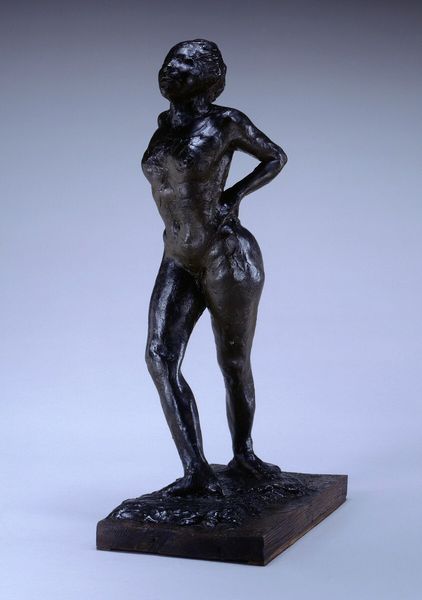
Dimensions: object: 1206 x 692 x 527 mm
Copyright: © ADAGP, Paris and DACS, London 2014 | CC-BY-NC-ND 4.0 DEED, Photo: Tate
Editor: Here we have Aristide Maillol's "Torso of the Monument to Blanqui," housed at the Tate. The bronze has a gorgeous, dark patina. What strikes you most about its form and the materials used? Curator: The rough bronze betrays its making; it is not just about the idealized form but about labor. Maillol is memorializing a socialist revolutionary. How does the material connect to Blanqui's social context? Editor: That's interesting. The bronze gives the figure a sense of permanence and power, but also connects it to industrial processes. Curator: Exactly. The monument embodies the complexities of memorializing revolutionary figures through the very means of production it might critique. It’s a fascinating tension. Editor: I hadn't considered that before. Thanks for the insight!
Comments
tate 8 months ago
⋮
http://www.tate.org.uk/art/artworks/maillol-torso-of-the-monument-to-blanqui-n04415
Join the conversation
Join millions of artists and users on Artera today and experience the ultimate creative platform.
tate 8 months ago
⋮
This sculpture derives from a full-length statue made as a memorial for the French socialist Louis-Auguste Blanqui. Because Blanqui spent much of his life imprisoned for his revolutionary activities, the complete monument showed a woman in chains. Maillol later reworked the figure to make this torso. In this fragmentary form it echoes the classical heritage of Greek art, and by extension the qualities of purity, energy and democratic freedom associated with ancient Athens and with Blanqui’s struggle. Gallery label, August 2004

